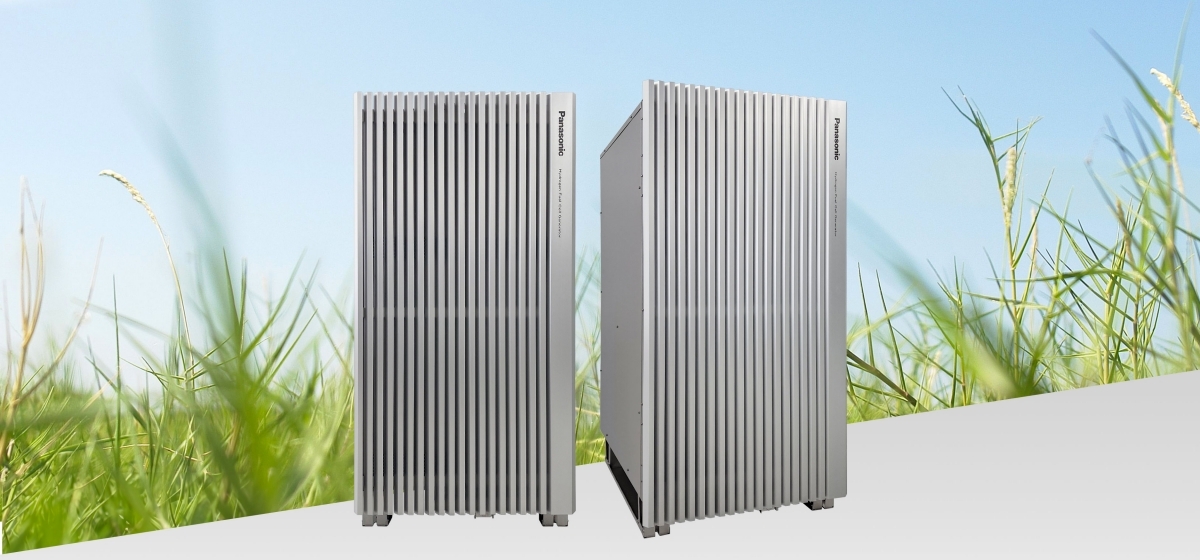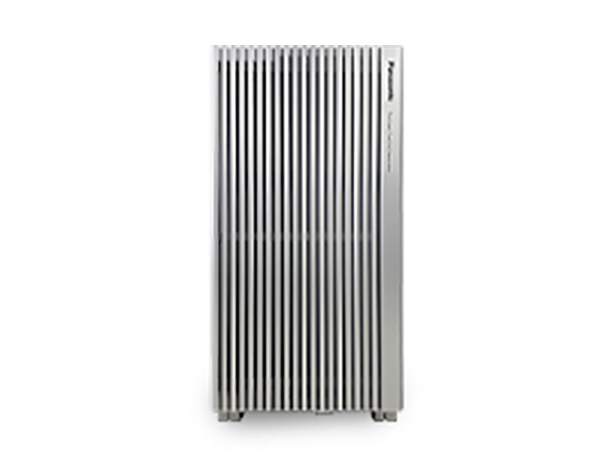Pure Hydrogen Fuel Cell Generator
Add to WishlistRemove from Wishlist
NO ROOM TO ADD MORE PRODUCTS
The wishlist has already reached the maximum number of products
FC-H99PGD1P
PH3 Hydrogen Fuel Cell
The PH3 offers a highly flexible and scalable platform suitable for a variety of commercial and industrial applications across Australia.


Features
The new Panasonic PH3 model utilises a cogeneration system which generates a maximum of 10kW of DC power, and approximately 8.2kW of heat through the chemical reaction between high-purity hydrogen and oxygen in the air. By connecting hot water storage, heat generated from the fuel cell can be converted into hot water (approx. 60⁰C).
The new model has also been designed to be flexible across a range of environments. Multiple modules of the PH3 (up to 250) can be connected together, and power output can be adjusted in 1kW increments between 4kW and 10kW. With maintenance access at the front, the PH3 can also be installed in small spaces and has been designed to operate in temperatures as low as -15⁰C and in altitudes as high as 1,000m.
High efficiency rates have been attained for the PH3, including 57 per cent for electrical efficiency (DC, LHV), 47 per cent for heat recovery efficiency (LHV), and a total efficiency of 104%. This heightened efficiency results in reduced hydrogen usage, thus lowering operational costs. A 15-year overhaul stop period extends operational longevity and reduces life cycle costs.
The new model has also been designed to be flexible across a range of environments. Multiple modules of the PH3 (up to 250) can be connected together, and power output can be adjusted in 1kW increments between 4kW and 10kW. With maintenance access at the front, the PH3 can also be installed in small spaces and has been designed to operate in temperatures as low as -15⁰C and in altitudes as high as 1,000m.
High efficiency rates have been attained for the PH3, including 57 per cent for electrical efficiency (DC, LHV), 47 per cent for heat recovery efficiency (LHV), and a total efficiency of 104%. This heightened efficiency results in reduced hydrogen usage, thus lowering operational costs. A 15-year overhaul stop period extends operational longevity and reduces life cycle costs.
Cogeneration system with a maximum 10kW of DC power output

A pure hydrogen fuel cell generator PH3 can generate a maximum of 10kW of DC power, as well as approximately 8.2kW of heat through a chemical reaction between high-purity hydrogen and oxygen in the air. By connecting a hot water storage to the product, heat generated from the fuel cell can be converted into hot water (approx. 60ºC) for use in a factory or building.
Multiple 10kW modules can be connected.

By using the dedicated PH3 app, the power output can be adjusted in 1kW increments between 4kW and 10kW per module.
Since up to 250 pure hydrogen fuel cell generators can be connected, flexible power generation plans can be formulated for factories and buildings where various types of demand fluctuations are expected.
Since up to 250 pure hydrogen fuel cell generators can be connected, flexible power generation plans can be formulated for factories and buildings where various types of demand fluctuations are expected.
Highly-flexible installation facilitates proposals to a wide range of customers

The PH3 can be installed even in small spaces, since the maintenance access points are located in the front*⁷.
It can also be provided to a wide range of customers as it is resistant to cold (lower limit: -15ºC), as well as high altitude (1,000m).
It can also be provided to a wide range of customers as it is resistant to cold (lower limit: -15ºC), as well as high altitude (1,000m).
*7: Since installation regulations differ depending on the country, please confirm them before installation.
High efficiency and long-designed life cycle reduce total costs
High efficiency rates such as an electrical efficiency of 57% (DC, LHV), heat recovery efficiency of 47% (LHV), and total efficiency of 104% have been achieved. High efficiency leads to reduced hydrogen usage, contributing to reduced running costs. The overhaul stop period is designed to be 15 years to ensure a long operating life *⁴, which can reduce life cycle costs.
Specs

Product name
-
Pure Hydrogen Fuel Cell Generator ”H2 KIBOU”
Type of fuel cell
-
Polymer Electrolyte Fuel Cell (PEFC)
Model number
-
FC-H99PGD1P
Year and month of release
-
October 2024 (planned)
Design panel
-
Optional product (separately sold)
Configuration
-
Cogeneration system (external water-cooling system)
Basic performance
-
Output
-
Power
-
10kW max.
Adjustable in 1kW increments between 4 and 10kW
-
-
Voltage
-
DC 380-495V*⁸
(Fixed Voltage)
-
-
-
Power consumption
-
During startup
-
300±90W
-
-
Freezing prevention
-
583W
-
-
-
Efficiency
-
Power generation (DC)
-
LHV: 57%, HHV: 48.1%
-
-
Heat recovery
-
LHV: 47%, HHV: 39.7%
-
-
-
Hydrogen
-
Consumption
-
97.5NL/min ≈ 6N㎥/h
103.7NL/min (Max)
-
-
Supply pressure
-
50±20kPa
-
-
-
Exhaust heat
-
Output
-
8248W
-
-
Water-cooling device
-
Water-cooling equipment is required (external procurement)
-
-
Supporting cogeneration
-
Hot water storage unit (external procurement)
-
-
-
Time
-
Startup
-
30sec (approx. 40sec to achieve the rating)
-
-
Continuous power generation
-
168hours (7days)
-
-
-
Dimensions
-
Main unit
-
W900mm x D865mm x H1787mm
W900mm x D898mm x H1787mm (with a design panel)
-
-
Main unit packaging
-
W957mm x D966mm x H1917mm
-
-
-
Weight
-
Main unit when dry
-
340kg
354kg (with a design panel)
-
-
Packaging when dry
-
360kg
(a design panel is 18kg)
-
-
-
Control
-
When up to 10 modules are connected*⁹
-
PH3 app (provided with PH3) (PH3 app is not required during EMS connection)
-
-
When up to 250 modules are connected (with PLC)*¹⁰
-
PH3 app (provided with PH3) (PH3 app is not required during EMS connection)
-
-
Installation conditions
-
Maximum altitude for installation
-
1,000m
-
-
Maintenance space
-
Front maintenance: 600mm, Other: 10mm *11,12
-
-
Installation environment temperature
-
-15 to 40ºC
-
Maintenance
-
Periodical Maintenance
-
Required depending on cumulative hours of power generation
-
-
Overhaul (Whichever comes first)
-
Energization time 15years
Cumulative hours of power generation 100,000H
Cumulative start & stop cycle 4,500times
-
Note
-
*8 : The inverter is required conforming to the application note.
*9 : The computer used to install the app must be provided by the customer. The computer and fuel cell unit must be connected via LAN.
*10 : The computer and PLC used to install the app must be provided by the customer. The computer and PLC, as well as the PLC and fuel cell unit, must be connected via LAN (hub relay).
*11 : On the side of the front face of the main unit, 400mm space is required to open the door.
*12 : In case of attaching a design panel, 70mm space is required for left and right sides.
The product described in this release is under development and its specifications are subject to change without prior notice.






